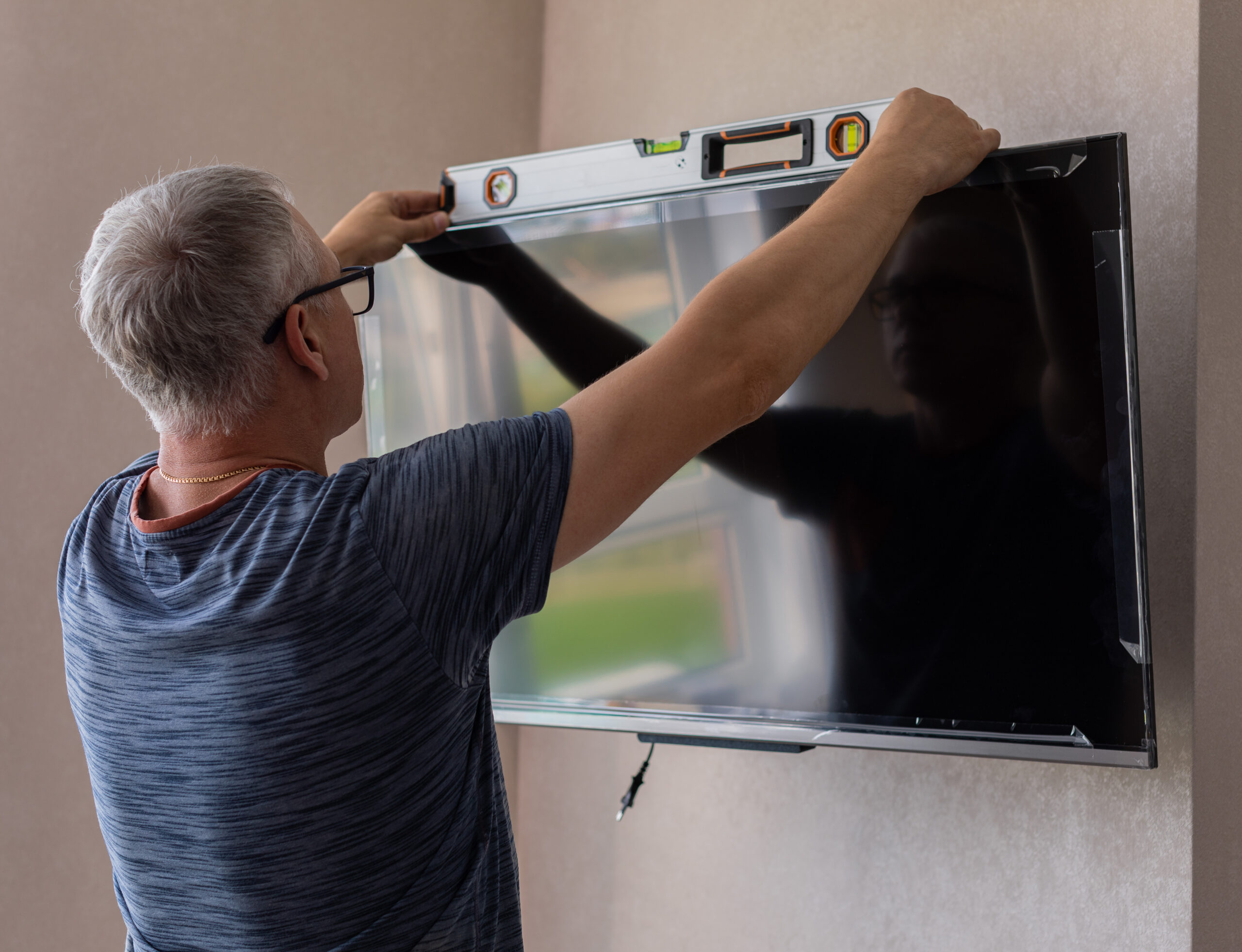How To Measure A TV: The Ultimate Guide To Getting Accurate Dimensions
Measuring a TV might seem like a simple task, but there’s more to it than meets the eye. Whether you're determining the size of your existing television, shopping for a new one, or ensuring it fits perfectly in a designated space, understanding how to measure a TV is crucial. Accurate measurements help prevent costly mistakes and ensure you make an informed choice when purchasing or mounting your TV.
When it comes to TVs, size isn’t just about the screen itself but also includes the bezels, stand, and other components. The diagonal measurement often advertised doesn’t always give you the full picture of the TV’s dimensions. Knowing how to measure a TV correctly ensures you have the right fit for your entertainment center, wall mount, or room layout. Plus, it helps you avoid miscalculations that could lead to frustration later on.
In this guide, we’ll dive deep into the step-by-step process of measuring a TV, covering everything from screen diagonal to depth, width, and height. We’ll also answer common questions and provide detailed instructions to ensure you know exactly what to do. Whether you’re a tech enthusiast or just someone trying to set up a home theater, this guide will simplify the process and leave you confident in your measurements.
- All You Need To Know About Wednesday Wednesday The Ultimate Guide
- Piccino Coffee Bar A Perfect Blend Of Tradition And Modernity
Table of Contents
- What Does TV Size Really Mean?
- How to Measure a TV Screen?
- Why Do You Need Accurate TV Measurements?
- How to Measure a TV for Wall Mount?
- How to Measure a TV for Entertainment Center?
- Measuring TV Screen Diagonal
- Measuring TV Width and Height
- Measuring TV Depth
- How to Account for TV Stand Dimensions?
- TV Measurements vs. Viewing Distance
- How to Measure for Curved TVs?
- Measuring for TV Covers and Accessories
- Common Mistakes to Avoid When Measuring TVs
- Frequently Asked Questions (FAQs)
- Conclusion
What Does TV Size Really Mean?
When manufacturers advertise the size of a TV, they’re typically referring to the diagonal measurement of the screen, not the overall dimensions of the television. This diagonal measurement is taken from one corner of the screen to the opposite corner, excluding the bezels or frame. However, this doesn’t give you the complete picture of the TV’s physical size.
For instance, a 55-inch TV has a screen that measures 55 inches diagonally, but its width, height, and depth depend on the model, brand, and design. Bezels, stands, and additional features like speakers can affect the overall size. So, understanding what the advertised size represents is essential when planning for placement or installation.
Why should you know the actual dimensions?
Knowing the actual dimensions of a TV helps you:
- Advertising Specialty Institute Your Ultimate Guide To Success In Promotional Products
- Master The Art Of Skincare With The Perfect Serum Course Pitch
- Ensure it fits in your designated space.
- Choose the right wall mount or entertainment center.
- Optimize your viewing experience based on room size and layout.
It’s also worth noting that screen size doesn’t always correlate with picture quality or resolution. A 55-inch TV might have the same resolution as a 65-inch one, but the pixel density and viewing experience will vary. This makes accurate measurements critical for both practical and aesthetic purposes.
How to Measure a TV Screen?
Measuring a TV screen involves determining the diagonal size, which is the most commonly advertised measurement. To do this, use a measuring tape or ruler and follow these steps:
- Start at one corner of the screen, excluding the bezel or frame.
- Stretch the measuring tape diagonally to the opposite corner.
- Ensure the tape is straight and not sagging for an accurate measurement.
This diagonal measurement gives you the screen size in inches, which is how TVs are typically marketed. However, remember that this measurement doesn’t include the bezels, stand, or other components.
What tools do you need?
- A flexible measuring tape or ruler.
- Good lighting to see the edges clearly.
By accurately measuring the screen, you’ll have a clear idea of the TV’s advertised size, which is useful for comparing models or ensuring compatibility with accessories like screen protectors.
Why Do You Need Accurate TV Measurements?
Accurate TV measurements are crucial for various reasons, ranging from ensuring proper fit to optimizing your viewing experience. Here’s why getting the measurements right is so important:
- Space Planning: Whether you’re placing your TV on a stand or mounting it on a wall, knowing its exact dimensions ensures it fits perfectly in the designated area.
- Accessory Compatibility: Accurate measurements help you choose the right wall mount, TV cover, or entertainment center without guesswork.
- Viewing Comfort: The size of your TV affects the optimal viewing distance and angle, which are essential for an immersive experience.
Additionally, accurate measurements prevent inconveniences like having to return a TV or accessories that don’t fit. They also save time and effort during installation or placement.
How to Measure a TV for Wall Mount?
When preparing to mount your TV on a wall, accurate measurements are essential to ensure a secure and aesthetically pleasing installation. Here’s how to measure a TV for wall mounting:
- Measure the TV’s Width and Height: Use a measuring tape to determine the TV’s width and height, including the bezels.
- Determine the VESA Pattern: The VESA (Video Electronics Standards Association) pattern refers to the distance between the mounting holes on the back of the TV. Measure both the horizontal and vertical spacing between these holes.
- Check the Wall Space: Measure the wall area where the TV will be mounted to ensure it accommodates the TV’s dimensions.
What is the VESA standard?
The VESA standard ensures compatibility between TVs and wall mounts. Common patterns include 200x200mm, 400x400mm, and 600x400mm, but it’s crucial to verify your TV’s specific pattern before purchasing a mount.
By measuring your TV and wall space accurately, you can achieve a professional-looking installation that enhances your viewing experience.
How to Measure a TV for Entertainment Center?
If you’re placing your TV in an entertainment center, it’s vital to measure both the TV and the available space to ensure compatibility. Here’s how:
- Measure the Width: Use a measuring tape to determine the TV’s width, including the bezels.
- Measure the Height: Measure the TV’s height from the bottom to the top, including any stand or base.
- Measure the Depth: Check the depth of the TV, including protrusions like the stand or speakers.
- Compare with the Entertainment Center: Measure the width, height, and depth of the designated space in the entertainment center to ensure the TV fits comfortably.
By taking these measurements, you can avoid issues like insufficient ventilation, overhanging edges, or an unstable setup.
Frequently Asked Questions (FAQs)
1. Can I measure the TV with the stand attached?
Yes, but ensure you include the stand’s height and depth in your measurements to get the full dimensions of the TV when it’s set up.
2. How do I measure a curved TV?
For curved TVs, measure the screen diagonally as you would with a flat-screen TV. Additionally, account for the curvature when measuring depth.
3. Can I use a smartphone app to measure my TV?
Yes, several smartphone apps use augmented reality to measure objects, including TVs. However, a physical measuring tape is more accurate.
4. What’s the ideal viewing distance for a 55-inch TV?
The ideal viewing distance for a 55-inch TV is approximately 7 to 11 feet, depending on the resolution and screen type.
5. Do TV sizes include bezels?
No, the advertised size refers to the screen’s diagonal measurement and excludes the bezels.
6. How do I measure my TV for a screen protector?
Measure the screen’s width and height, excluding the bezels, to ensure a proper fit for the screen protector.
Conclusion
Knowing how to measure a TV is an essential skill that ensures you make the right choices for your space, accessories, and viewing experience. From screen size to depth, width, and height, accurate measurements save time, effort, and money while enhancing your setup’s overall functionality and aesthetics. With this guide, you’re well-equipped to measure your TV like a pro and enjoy your entertainment setup to the fullest.
- The Fort Colorado A Timeless Landmark Of History And Heritage
- Plug Play The Ultimate Guide To Simplifying Technology And Entertainment

How To Measure TV Screen A Comprehensive Guide

How to Measure TV Advertising Recast